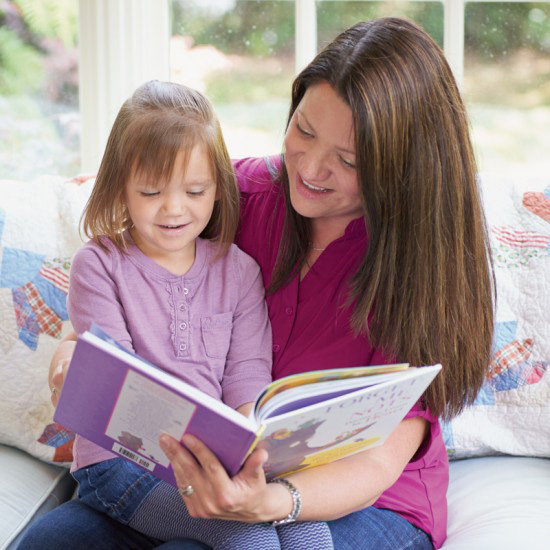
"I try to get my students to memorize a little bit of poetry, and it's interesting because their reaction is they groan. But once they get a sonnet in their head, or even a little poem by Emily Dickinson, they line up outside my office ready to recite it for me."
—Billy Collins (New York Times podcast, 5-13-20)
 Schools are closed and teachers are adjusting to new and challenging methods of educating their students. With concerns about family and the pandemic, where can we turn for comfort, courage, inspiration, and humor? There is an often forgotten resource that can help soothe our souls or make us laugh— poetry.
Schools are closed and teachers are adjusting to new and challenging methods of educating their students. With concerns about family and the pandemic, where can we turn for comfort, courage, inspiration, and humor? There is an often forgotten resource that can help soothe our souls or make us laugh— poetry.
If you've never had the time or inclination to read much poetry, you may not have included poetry in the classroom. Now might be a good time to cultivate an appreciation for poetry, or revisit the poets you once loved, whether it was A.A. Milne, Walt Whitman, or Maya Angelou. Then you may find yourself inspired to share more poetry with children.
O beautiful for spacious skies,
For amber waves of grain,
For purple mountain majesties,
Above the fruited plains.
America the Beautiful, like most songs, is also a poem. There are many sources of poetry, from Shakespeare to the holy books of all religions, as well as websites dedicated to topics of interest.
If you're a nature lover you might enjoy the poems of Mary Oliver. One of my favorites is The Summer Day in which she describes a grasshopper eating sugar out of her hand. With childlike wonder she notes how the grasshopper moves her jaws "back and forth, instead of up and down" and gazes "with her enormous and complicated eyes." The poem ends with the question:
Tell me, what is it you plan to do
With your one wild and precious life?
If you're interested in travel, you might explore the poetry of David Whyte. In The Old Interior Angel he describes trekking in Nepal and coming to a broken-down bridge over a deep gorge. He sat for hours, too afraid to cross. Finally, an elderly woman came along. "Namaste, " she said and "in one movement" crossed that "shivering chaos of wood and broken steel." Without thinking, David rose and followed her.
On his audio CD, The Poetry of Self-Compassion (1992), David discusses this poem. "At some bridges in life, the part of you that always gets it done has to sit down." Some of us may be feeling that way during this pandemic! Perhaps we too will find inspiration from unlikely sources, as David did with the old woman's "no nonsense compassion."
Why not try your hand at writing a poem? This is something you can do on your own or with the children in your life. Haiku, an ancient Japanese style of poetry, is a fun way to get your feet wet. The poems are typically about nature, so you have a ready-made focus. And they're very short! Haiku poems have three lines: the first and third lines have five syllables, the second line has seven syllables.
Just go out in your backyard and observe the bird on the branch, the ant carrying a crumb, or the sliver of moon in the sky. If you have young children, they can dictate their observations and you can help them craft a haiku-type poem. Don't worry if the lines don't follow the 5-7-5 pattern. After being translated into English, this famous haiku by Basho no longer follows the rule, but is still strikingly vivid:
The old pond
A frog jumps in
Plop!
Why not start a new routine? Read a poem a day for yourself and perhaps another for the children. The book Poetry Speaks to Children includes poems that will delight children of all ages and many that appeal to adults too, such as The Negro Speaks of Rivers by Langston Hughes and Robert Frost's Stopping by Woods...
Many children enjoy humorous poets such as Ogden Nash and Billy Collins. The joyful release of laughter is captured in Shel Silverstein's Noise Day.
"...Sneeze-hiccup-whistle-shout. Laugh until your lungs wear out."
You may find that once you deepen your own appreciation for poetry, you'll want to share more poetry with children. You can:
Your children are not your children.
They are the sons and daughters of Life's longing for itself.
They come through you but not from you,
And though they are with you yet they belong not to you...
These are challenging times for all of us. When we give ourselves and the children in our lives the gift of the magical language of poetry, we connect with joy, wonder, and timeless beauty.
"Occasionally, a poem comes to us almost like a message in a bottle we find while walking along the beach, When we are facing difficult times in our lives, when it may be hard to hear or see things clearly, a poem can carry thoughts from other times or places, from those who have faced similar challenges, and whose ability to articulate their experiences can bring moments of insight and calm."
—Caroline Kennedy, Best Loved Poems of Jacqueline Kennedy Onassis
—by Irene Baker, MEd, Montessori Educational Consultant at Montessori Services. She holds both primary (ages 3-6) and elementary (ages 6-12) Montessori certifications and has taught at all three levels. For over 20 years, she has served as a Montessori consultant and teacher-trainer for primary and elementary levels, and has presented workshops for teachers at schools and AMS conferences. Her work with students and teachers is infused with her passions: storytelling, history, social justice, non-violent (compassionate) communication, poetry, meditation, music, and the natural world.
—Originally Published 2020